Creswell Crags Museum collections offer insight into the past and future of wolves
Bones found at the site are helping scientists to understand the diet of wolves and how they differ over time.
12/07/2024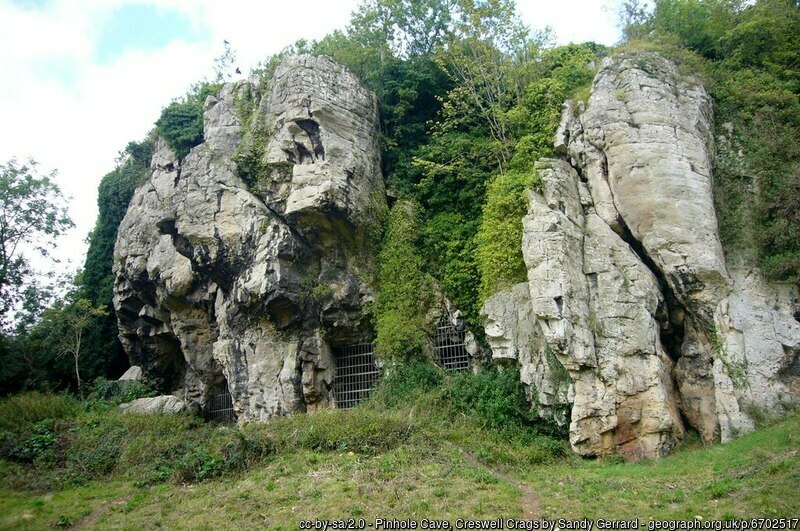
Located on the border of Derbyshire and Nottinghamshire, Creswell Crags is an enclosed limestone gorge surrounded by woodland, meadows and a lake. It has many caves and fissures containing prehistoric fossils and artefacts and is an area of interest to many scientific communities. The Victorians first discovered ancient artefacts in the cave sediments in the 19th century and, since then, scholars have been excavating the caves to answer pressing palaeontological and archaeological questions, and recreating fascinating stories of life during the last ice age, between 50 000 and 11 700 years before present (BP).
The Cresswell Crags Museum
The objects excavated from the caves at Creswell Crags and from the wider Creswell Heritage Area are stored in the Creswell Crags Museum, which holds a collection of nearly 40 000 objects, approximately 80 per cent of which are bones. The palaeontological collection is composed of subfossils that date back to the late Pleistocene (125 000 BP) and include the remains of a large range of mammal, bird, amphibian, fish and mollusc species.
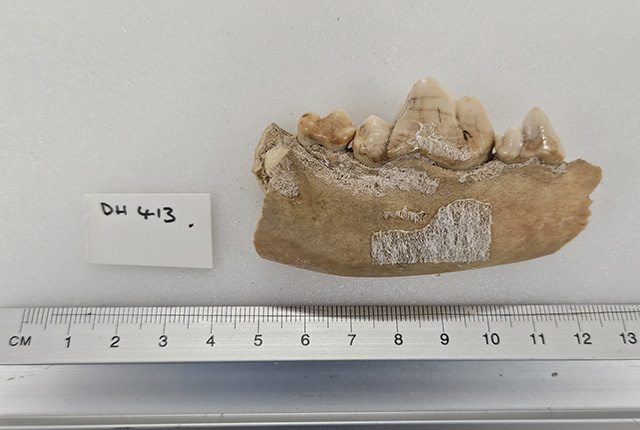
Wolf mandible from Dog Hole Cave, Creswell Crags. Image ID CWCHT: DH413, © Creswell Heritage Trust.
In addition to being used for exhibition display, the fossils from Creswell Crags Museum’s collections are used for research purposes. BGS is currently collaborating on one such research project, the NERC-funded ‘Nature of the beast’, with Prof Danielle Schreve at Royal Holloway, University of London. The project is investigating past and present diets of European wolves.
Why are we studying wolves and their diet?
Wolves are one of the northern hemisphere’s top predators, keeping populations of their prey in check and positively influencing overall biodiversity through their activities. However, the wolf (Canis lupis) is an endangered species in Europe and concerns exist as to the viability of European wolf populations as environmental and climate conditions change. The overarching aim of the ‘Nature of the beast’ project is to assess the effect of forcing factors such as changes in climate, environment, the prey community and carnivore competition on the feeding behaviours of wolves.

A wolf in the Wolfsforschungszentrum (Wolf Research Centre) in the Ernstbrunn Wildlife Park, Austria. © Mariofan13 via Wikimedia Commons.
One of the best ways to investigate the adaptability of any animal, including wolves, is through the study of their dietary behaviour. Diet is closely linked to climate and environment, which determine the available prey species and which predators are competing for resources on those same landscapes. This project employs a multi-proxy approach that combines dental microwear texture analysis, isotope analysis, cranio-dental morphology and analysis of scat to reconstruct wolf diets from the late Pleistocene and throughout the Holocene (the current warm period).
Dental microwear texture analysis
Dental microwear textural analysis (DMTA) is a way of investigating features on the biting surface of teeth. DMTA uses three-dimensional technology to image the tooth surface, which can be measured with specialised software in an unbiased way that is independent of human observer errors. Once measured, tooth surface features can show the extent to which carnivores are consuming meat or processing carcasses more fully, in other words, assessing the flesh-to-bone ratio of their diets.
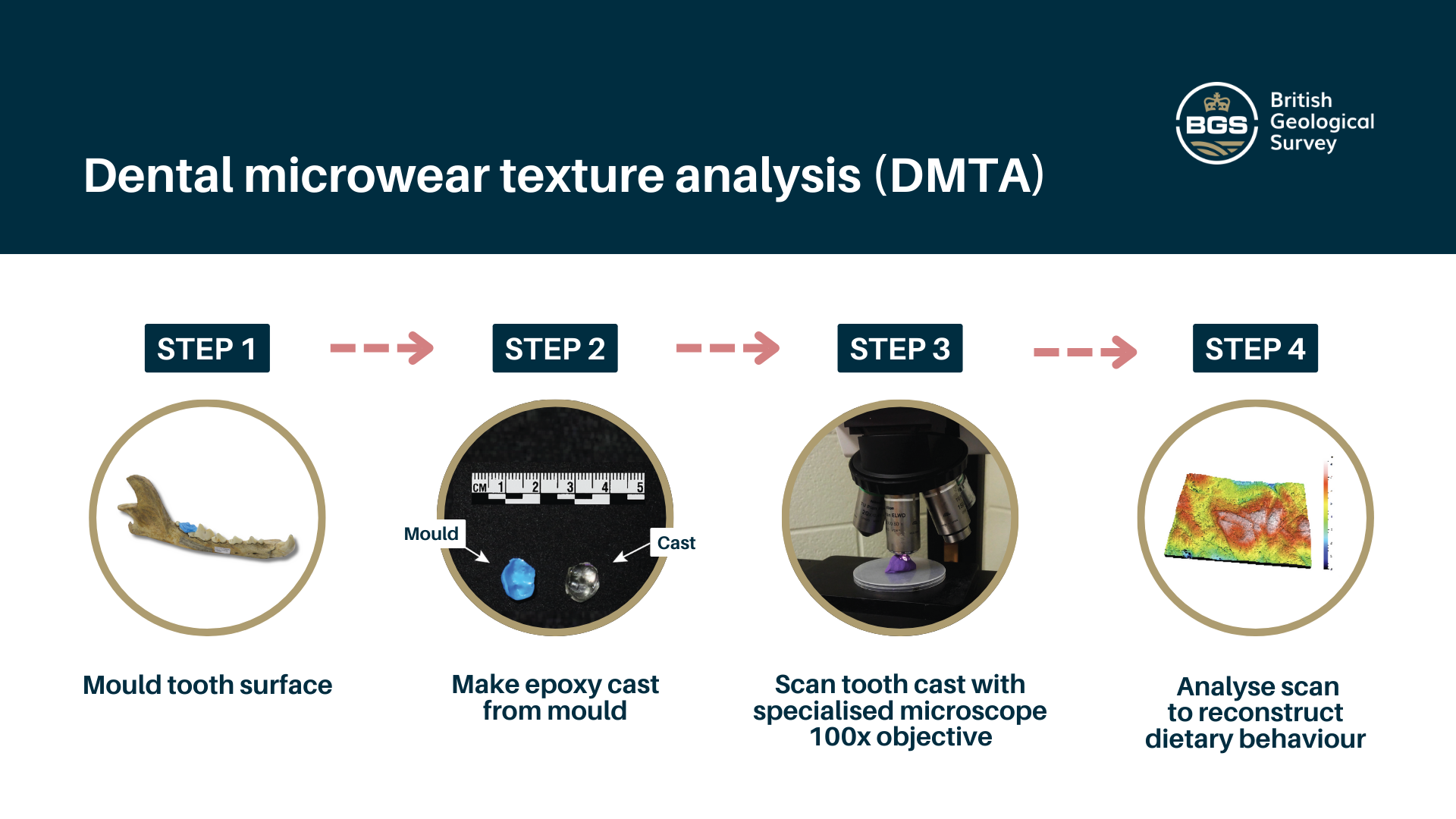
Process of dental microwear texture analysis. BGS © UKRI based on an original image © Amanda Burtt.
One way to think about how we analyse dental microwear is to consider animals that populate the extremes of the carnivore dietary behaviour continuum today. For example, the spotted hyena consumes a lot of bone as part of its natural behaviour; on the other hand, the cheetah primarily consumes flesh and prefer fresh kills.
Wolves fall on this spectrum somewhere between hyenas and cheetahs, and are known to flex their diet according to their surroundings. Observations from modern wolves have shown that they do consume some bone and prefer greasy, less dense, marrow-rich bones. Dental microwear studies of modern and ancient wolves confirm this dietary behaviour.
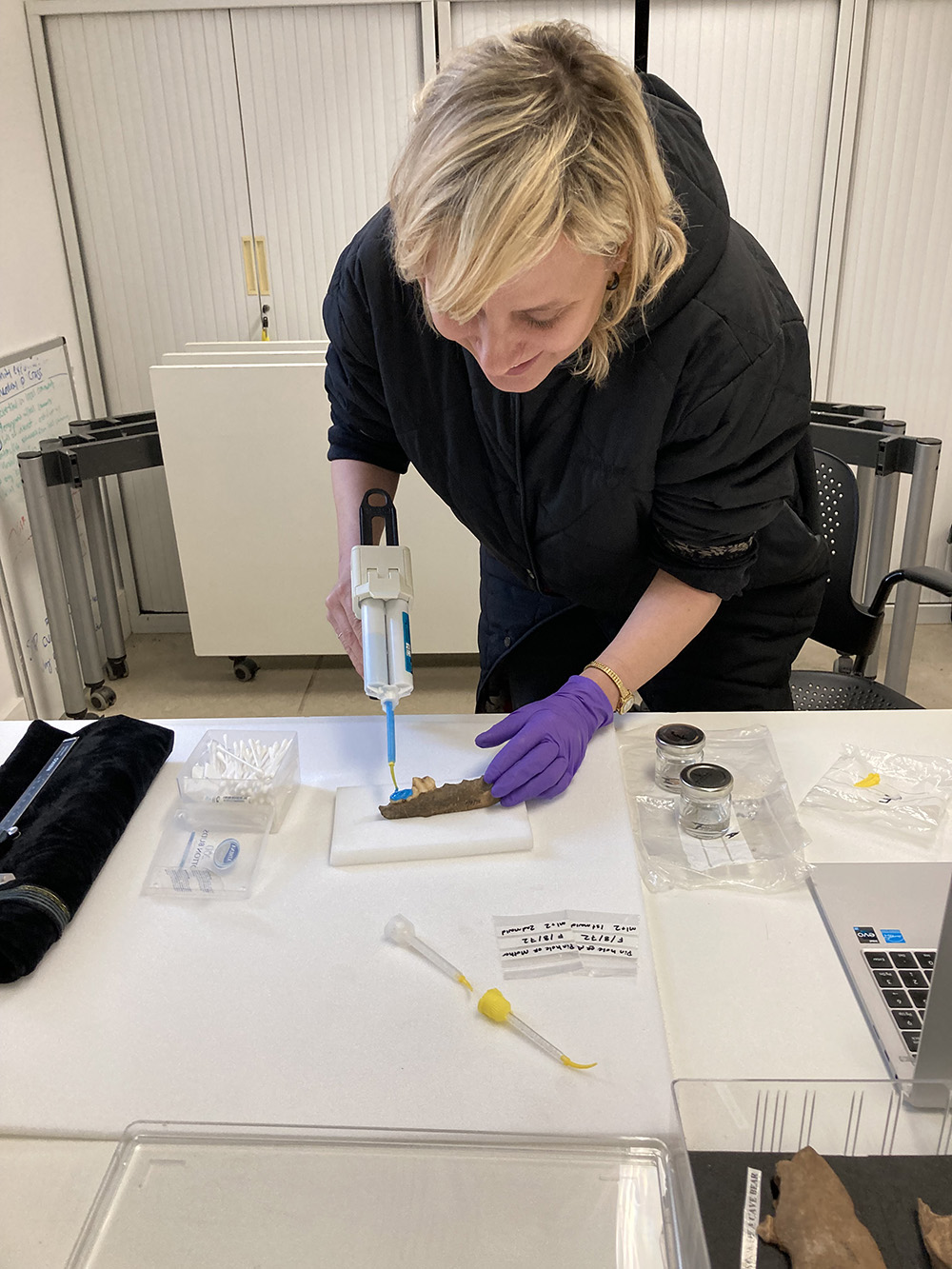
Dr Amanda Burtt taking a tooth mould for DMTA. © Angela Lamb.
However, when unable to access their preferred prey species (likely due to limited prey availability in their surroundings) wolves scavenge more intensively, resulting in dental textures that indicate elevated amounts of bone in their diet. Scavenging is part of the flexible dietary behaviour of wolves, which is reflected in their dental microwear and can inform our understanding of past environmental conditions, such as the size and availability of prey species.
Initial project results
A key goal of this research is to understand how wolves have adapted to changing circumstances in the past, so that current and future conservation policy can be appropriately tailored. Preliminary results have shown that, when temperatures were colder, the dental microwear of wolves indicates high flesh consumption. Inversely, when temperatures were warmer, wolves increased scavenging behaviour (consuming more bone).
Creswell Crags Museum’s collections hold fossil bones of wolves dating back 40 000 years. Some of these fossils were discovered due to a rock fall near the Dog Hole cave in 1978, along with bones of a diverse range of other animals including lynx, cow, horse and wild boar. They have since been used to provide evidence of a complex sequence of prehistoric animal occupation within the area.
Three individual wolves have been analysed for dental microwear and represent one glacial and one interglacial period. The results from Creswell Crags will be combined with data collected from other museum fossils across the UK, including the collection housed at BGS, and spanning the entirety of the late Pleistocene to the Holocene.
About the authors
Dr Diksha Bista
Dr Angela Lamb

Dr Angela Lamb
Research scientist
Dr Amanda Burtt (Royal Holloway, University of London)
Dr Angharad Jones (Creswell Crags Museum and Heritage Centre)
Prof Danielle Schreve (Royal Holloway, University of London)
Related news

What is the impact of drought on temperate soils?
22/05/2025
A new BGS review pulls together key information on the impact of drought on temperate soils and the further research needed to fully understand it.
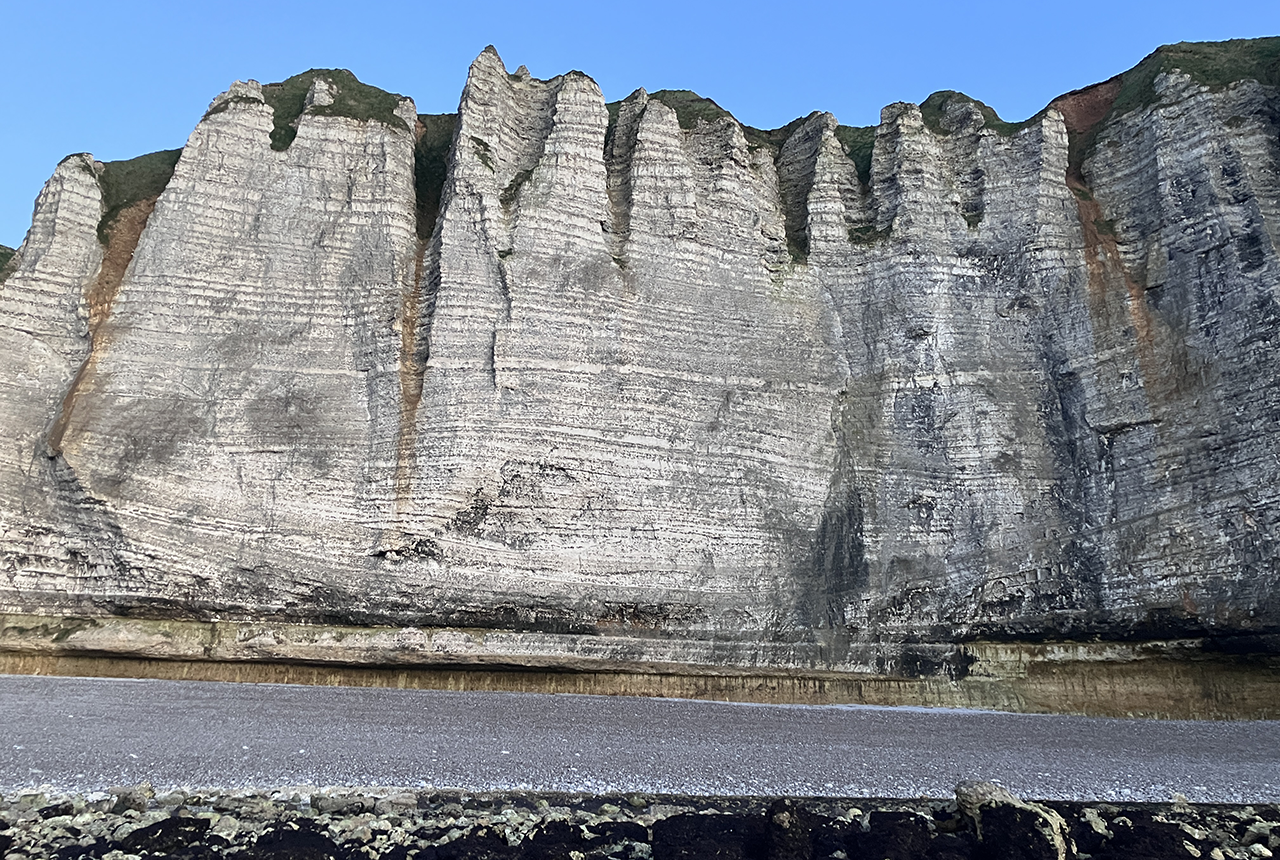
Geology sans frontières
24/04/2025
Geology doesn’t stop at international borders, so BGS is working with neighbouring geological surveys and research institutes to solve common problems with the geology they share.
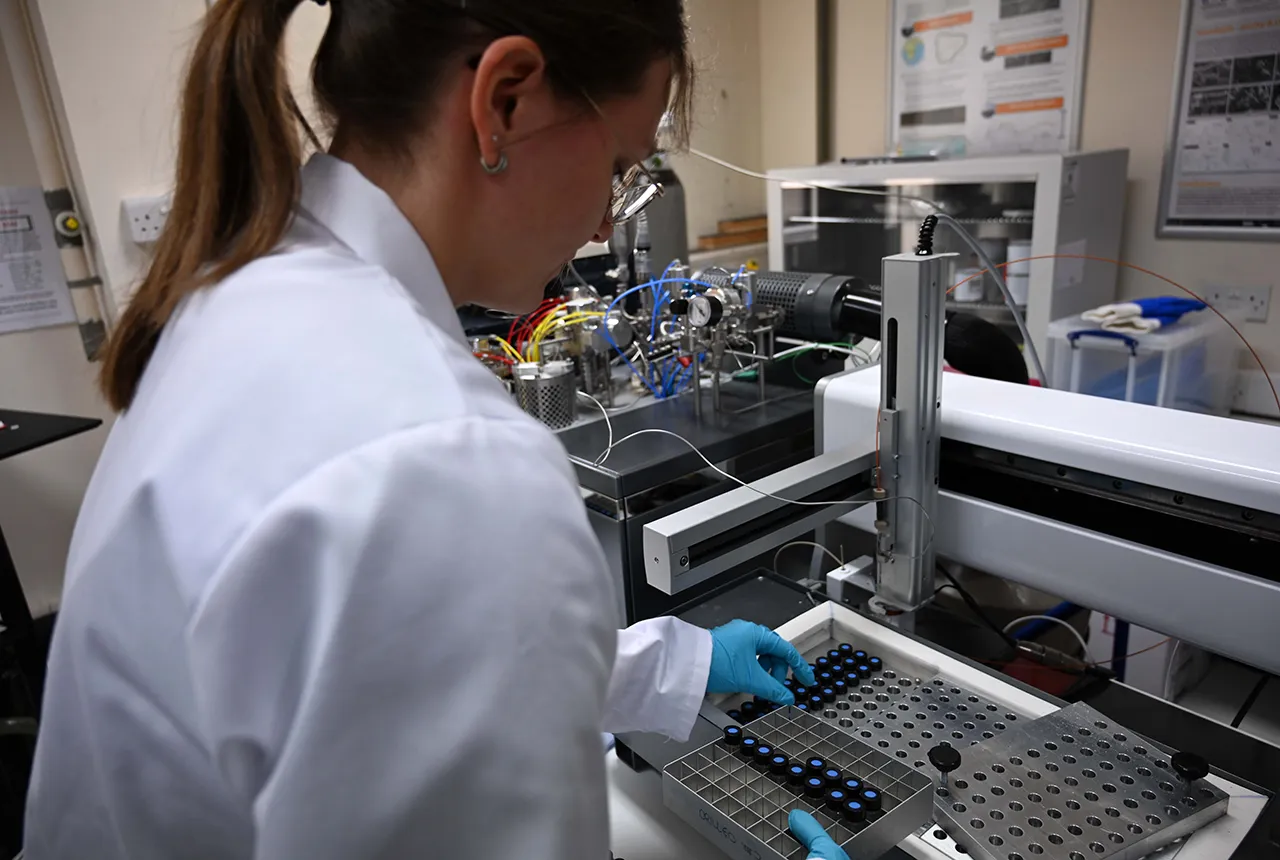
Carbon and oxygen isotope analysis of carbonates and the development of new reference materials
18/12/2024
Dr Charlotte Hipkiss and Kotryna Savickaite explore the importance of standard analysis when testing carbon and oxygen samples.
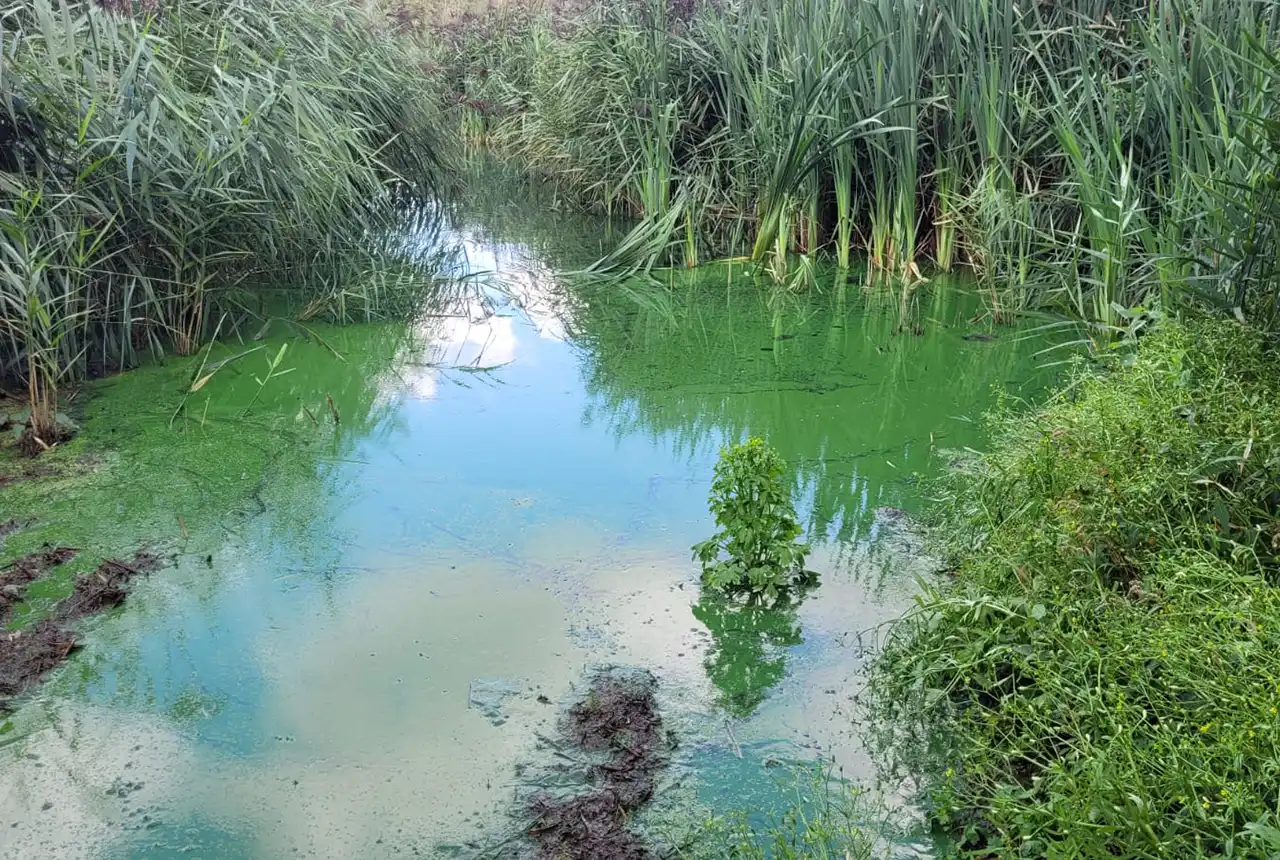
Studying oxygen isotopes in sediments from Rutland Water Nature Reserve
20/11/2024
Chris Bengt visited Rutland Water as part of a project to determine human impact and environmental change in lake sediments.
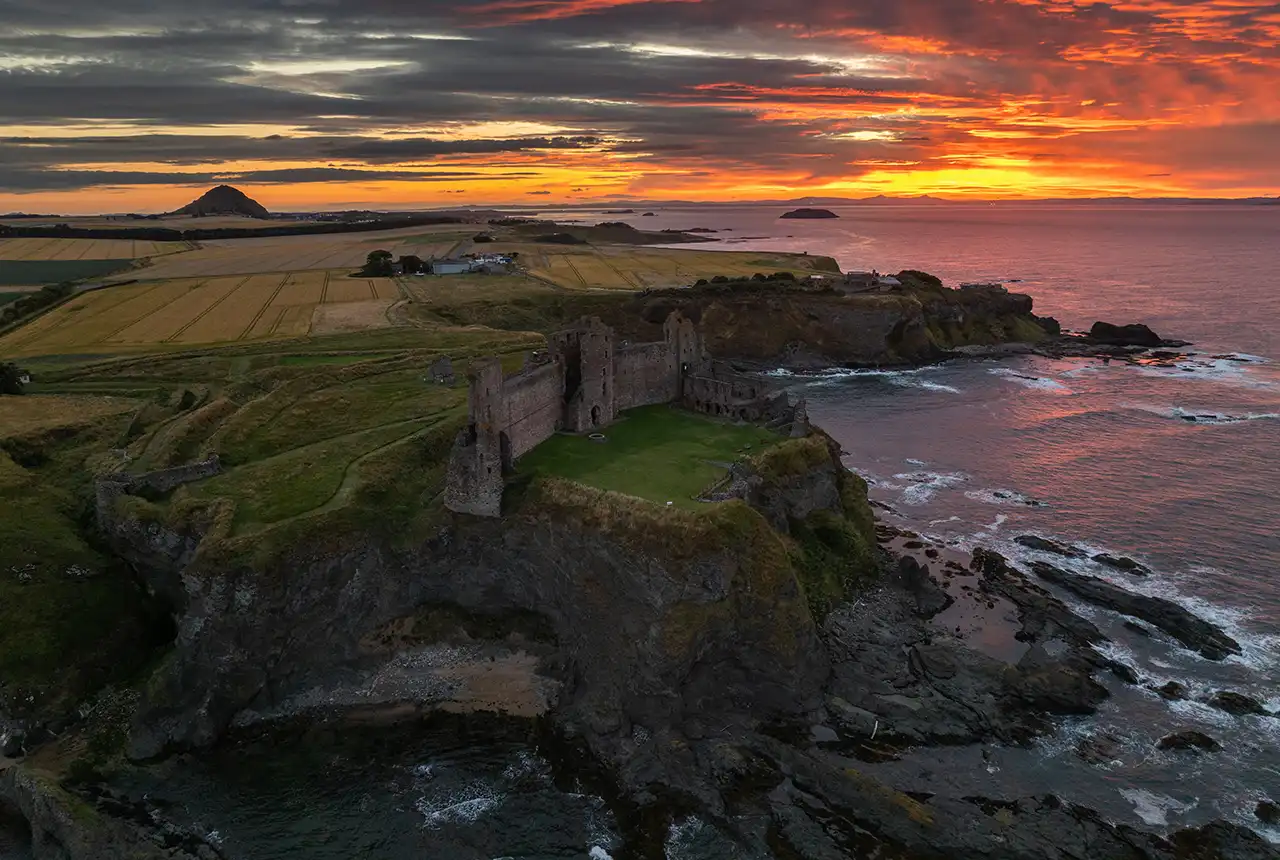
How can Scotland re-establish its building stone industry?
14/11/2024
British Geological Survey research, commissioned by Historic Environment Scotland, reveals an opportunity to re-establish the Scottish building stone market in order to maintain the country’s historic buildings.
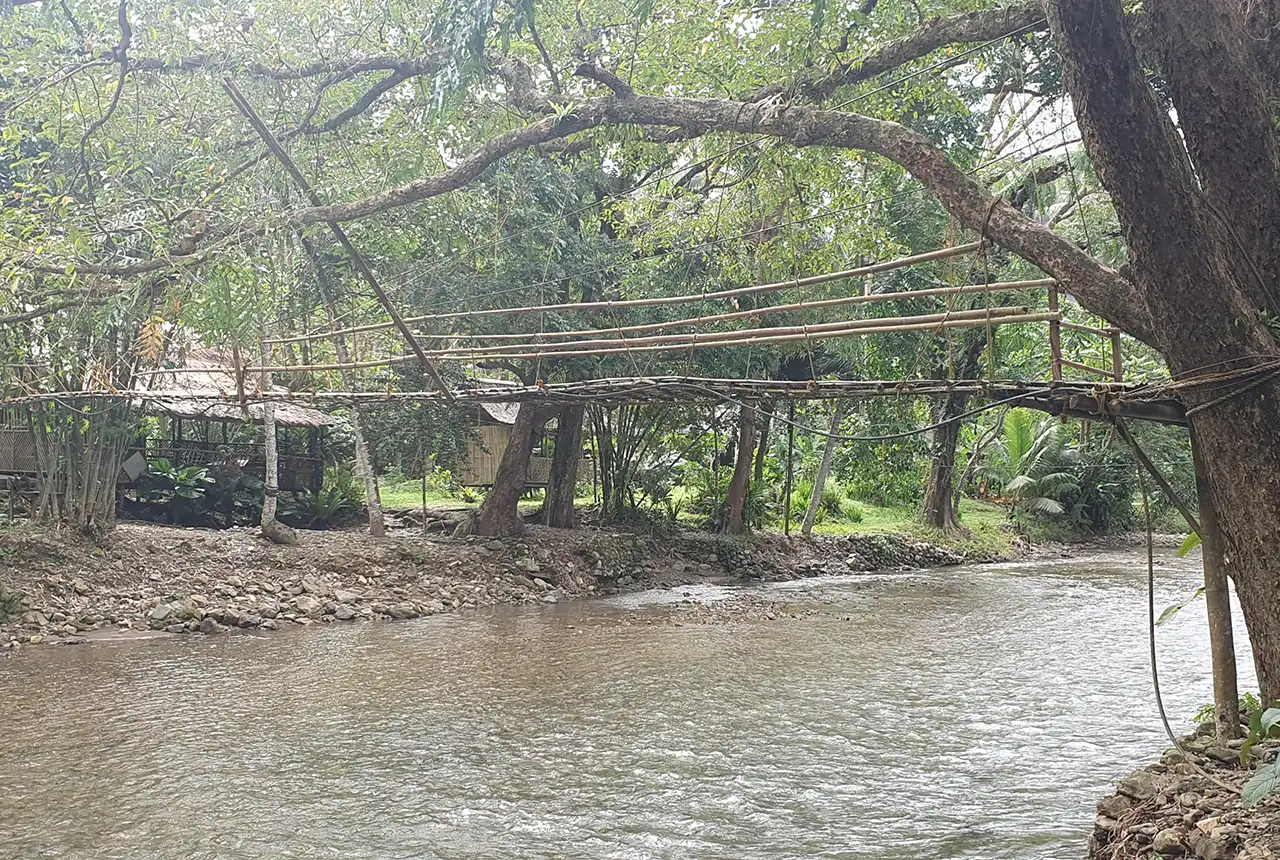
UK–Philippine partnership to help tackle the challenges of future water security in the Philippines
07/11/2024
New ‘hydrological hub’ to foster research and provide essential national water management datasets and tools.
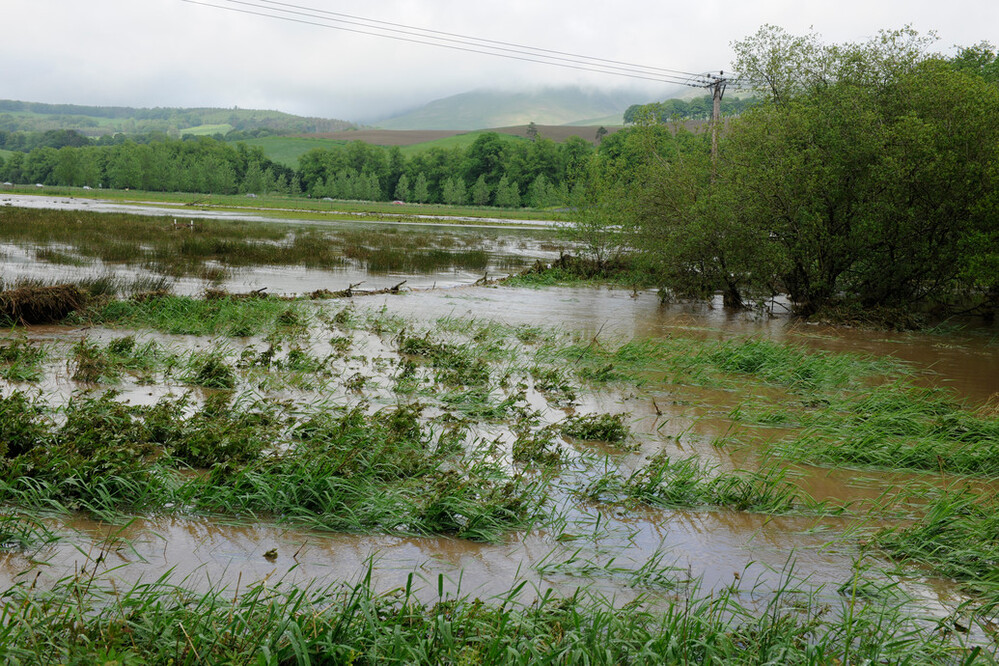
New £38 million project to reduce the impact of floods and droughts
02/09/2024
BGS will take a leading role in efforts to better predict the location and effects of extreme weather events.
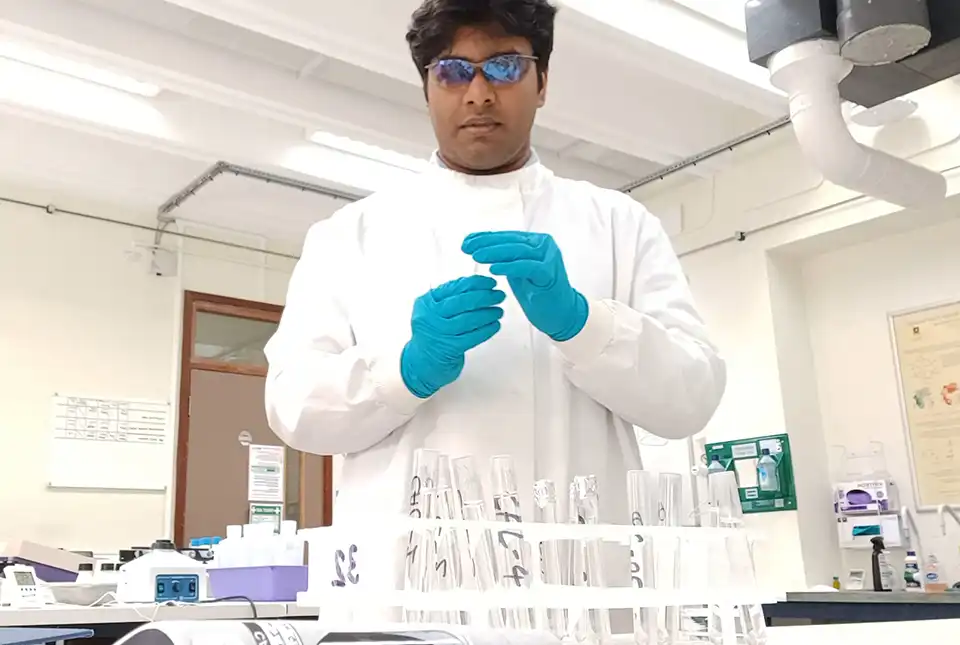
Laboratory life: my work experience week at BGS
20/08/2024
Aspiring astrophysicist Riveen Pehesara Kumanayaka shares his experience following an A-level work placement with BGS.

Extracting formation temperatures from stalagmites
14/08/2024
BGS’s Andrew Smith explores the karstic depressions of northern Spain in the quest to create a palaeothermometer.
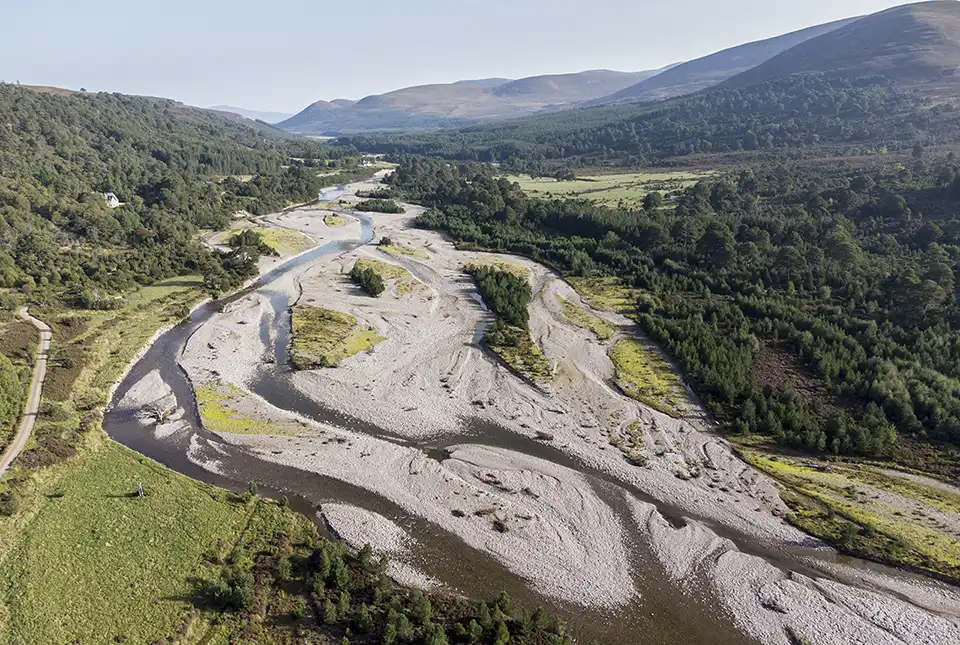
Warnings for Scottish farmers and distillers as new data indicates climate change may double number of droughts
23/07/2024
The agricultural and distilling sectors could face significant challenges after research finds the number of droughts in Scotland may double in the next 25 years.
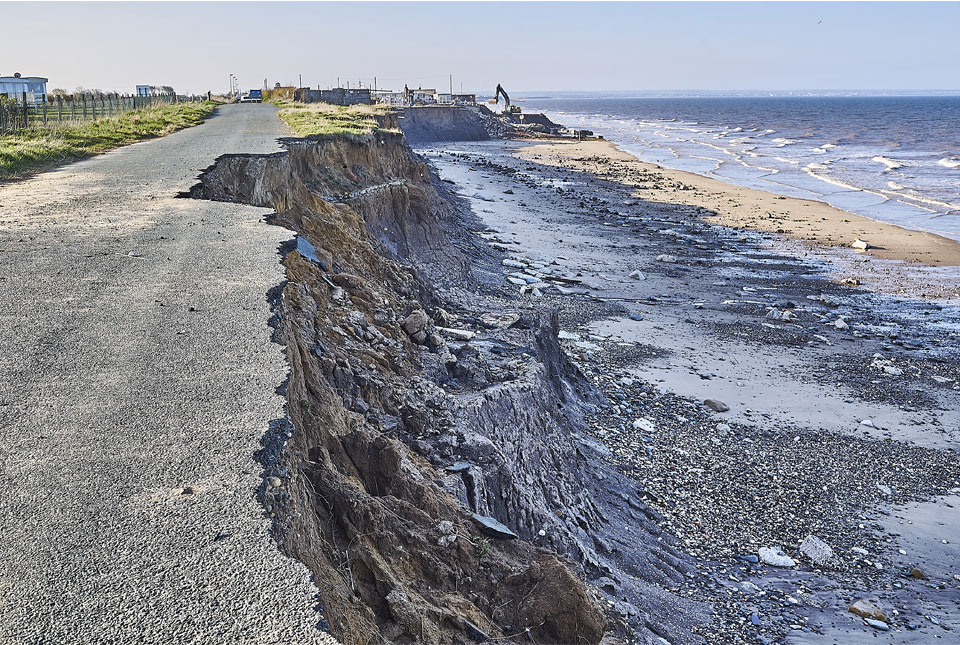
Spotlight on BGS coastal erosion data
18/07/2024
BGS GeoCoast data can support researchers and practitioners facing coastal erosion adaptation challenges along our coastline.

Creswell Crags Museum collections offer insight into the past and future of wolves
12/07/2024
Bones found at the site are helping scientists to understand the diet of wolves and how they differ over time.



